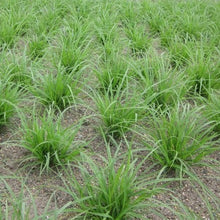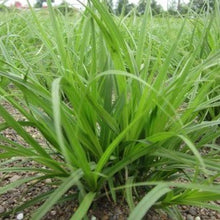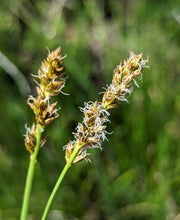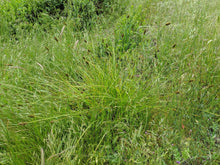
Carex densa
Though relatively uncommon in nurseries, dense sedge is a versatile, deer-resistant plant that forms compact evergreen mounds of foliage reaching 1-2 ft high. The attractive, cheerful green tufts create year-round structure in moist to seasonally wet areas such as an open woodland garden or meadowscape. The foliage provides excellent habitat for beneficial insects, while the elongated florets and chunky fruit, appearing from June-Aug, are nutrient-rich food for songbirds.
- Plant type/canopy layer: evergreen, perennial sedge, herb/ground layer
- Size at maturity: 18-28” tall, 18-28" wide
- Light requirements: full sun, part sun/part shade
- Moisture requirements: moist to wet soil, tolerates seasonal flooding and summer drought
- Bloom time: florets and fruit apparent between June and August.
- Growth rate/ease: fast growing, easy to grow
- Wildlife support: overall plant is a caterpillar host and larval food source for native butterflies and moths and are excellent refugia and nesting areas for beneficial insects; fruits provide food for songbirds,
- Native habitat/range: found in wetlands, riparian zones, and moist meadows up to elevations of about 1600m from northern California to Washington. Portland Plant List - yes.
- Special features & uses: semi-evergreen; deer resistant; landscape uses include rain gardens and bioswales, erosion control, bank stabilization
Gardening with Dense Sedge: Above all, this plant is versatile and provides great habitat! It prefers full to partial sun and is an excellent choice for rain gardens or around ponds and streams where its dense rhizomes control erosion and stabilize banks. It tolerates somewhat heavier soils and summer drought, though infrequent summer water will keep it more evergreen. Each individual tuft is fast growing, but it does not spread vigorously, making it an excellent choice for small gardens where space is a premium.
Photo Credits 1 & 2: Sevenoaks Native Nursery
Photo Credit 3: © Dominic Gentilcore, some rights reserved (CC-BY)
Photo Credit 4: © Ken-ichi Ueda, some rights reserved (CC-BY)







